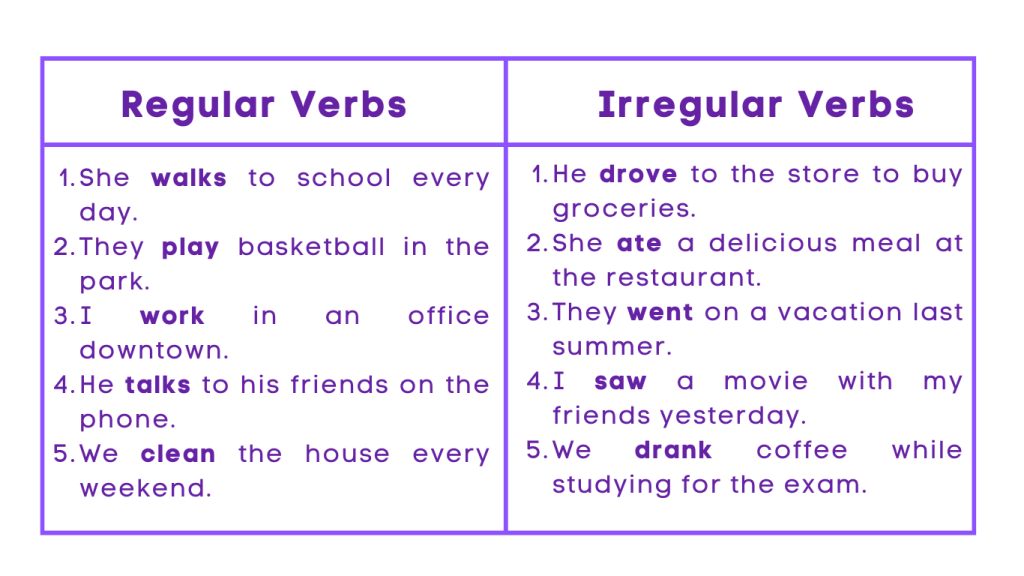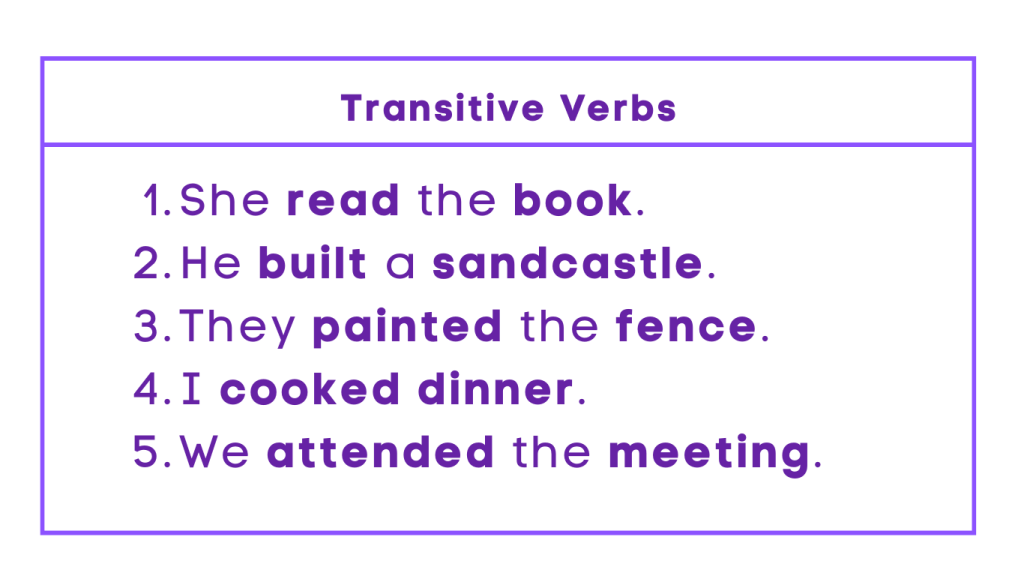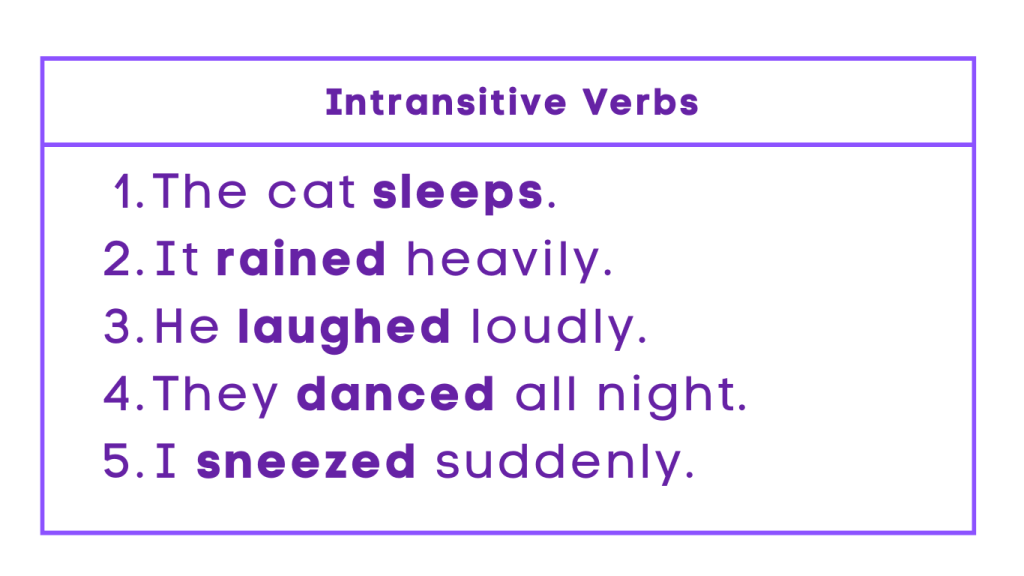What are Verbs? – Definition and Examples
Table of Contents
Introduction
Verbs
In the English language, verbs play a crucial role in expressing actions, states of being, and relationships between different elements of a sentence. Understanding the various types, categories, and forms of verbs is essential for effective communication and language comprehension. Let’s explore the world of verbs and delve into their diverse aspects.
Analogy of Definition
What are Verbs?
A verb is a word that expresses an action, occurrence, or state of being. It is a fundamental component of a sentence and is often described as the “doing” or “being” word. Verbs can convey a wide range of meanings and are essential for constructing meaningful and grammatically correct sentences. It is one of the eight part of speeches.
Method
Types of Verbs:
Verbs can be classified into different types based on their functions and meanings. The main types of verbs include:
1. Action Verbs: These verbs denote physical or mental actions performed by the subject. For example, “run,” “eat,” “think,” “write,” etc.
2. Stative Verbs: Also known as “state” or “non-action” verbs, these verbs express a state of being, emotion, possession, or sense perception. Examples include “be,” “belong,” “love,” “see,” etc.
Verbs can also be categorized based on their specific roles within a sentence. The main types of verbs include:
1. Auxiliary Verbs/Helping Verbs: These verbs are used in combination with main verbs to form different tenses, moods, and voices. Examples include “be,” “do,” “have,” etc.
2. Modal Verbs: Modal verbs express necessity, possibility, permission, or ability. Examples include “can,” “could,” “may,” “must,” etc.
3. Phrasal Verbs: These verbs consist of a main verb combined with one or more particles (prepositions or adverbs) to create a new meaning. Examples include “look after,” “give up,” “get along,” etc.
4. Linking Verbs: Linking verbs connect the subject of a sentence to a subject complement, which describes or renames the subject. Examples include “be,” “seem,” “become,” etc.
Categories of Verbs
Regular and Irregular Verbs:
Verbs can be categorized as regular or irregular based on their formation of past tense and past participle forms. Regular verbs follow a consistent pattern, while irregular verbs do not adhere to a standard rule.

The given examples showcase the use of regular verbs, which follow a predictable pattern for past tense forms (e.g., walk-walked), and irregular verbs, which have unique forms for past tense (e.g., drive-drove, eat-ate).
Transitive and Intransitive Verbs:
Verbs can also be classified as transitive or intransitive based on the type of action they express. Transitive verbs require a direct object to complete their meaning, while intransitive verbs do not require a direct object.

In these sentences, the verbs (read, built, painted, cooked, attended) are transitive because they have a direct object (the book, a sandcastle, the fence, dinner, the meeting), which makes the verbs transitive.

In these sentences, the verbs (sleeps, rained, laughed, danced, sneezed) are intransitive because they don’t have a direct object. They express an action without requiring an object to complete their meaning, which makes them intransitive.
Verb Forms
Verbs have different forms that indicate tense, mood, voice, and aspect. The base form of a verb is known as the “infinitive” or “root” form. Other forms include the present, past, and past participle forms, as well as the -ing form used in continuous tenses.
Examples
Using Different Forms of the Verb “Run”:
– Base Form (Infinitive): run
Example: He can run in a marathon.
– Present Tense: run(s)
Example: He runs on a daily basis.
– Past Tense: ran
Example: He ran everyday when he was young.
– Past Participle: run
Example: He has run in a marathon.
– Continuous Form: running
Example: He is running in a marathon.
Quiz
Tips and Tricks
1. Action Verbs vs. Stative Verbs
Tip: Action verbs express physical or mental actions, while stative verbs denote a state of being, emotion, or sense perception.
2. Understanding Auxiliary and Modal Verbs
Tip: Auxiliary verbs help form different tenses, while modal verbs express necessity, possibility, permission, or ability.
3. Regular vs. Irregular Verbs
Tip: Regular verbs follow a consistent pattern for past tense and past participle forms, while irregular verbs do not adhere to a standard rule.
4. Transitive vs. Intransitive Verbs
Tip: Transitive verbs require a direct object, while intransitive verbs do not require a direct object to complete their meaning.
5. Mastering Verb Forms
Tip: Understanding the different forms of a verb, such as the base form, present tense, past tense, past participle, and continuous form, is essential for constructing grammatically correct sentences.
Learn more about verbs with fun and interactive activities on our site, ChimpVine.
Real life application
Story: “The Verb Adventures of Sarah and Mark”
Sarah and Mark, two enthusiastic language learners, embarked on a journey to explore the diverse applications of verbs in real-life scenarios.
Scenario 1: The Cooking Challenge
Sarah and Mark participated in a cooking challenge where they had to follow a recipe and prepare a delicious meal. As they read through the instructions, they encountered various action verbs such as “chop,” “mix,” “bake,” and “stir,” which guided them through the cooking process.
Scenario 2: The Travel Experience
During their travel experience, Sarah and Mark encountered different stative verbs that described their emotions, perceptions, and states of being. They felt “excited” about exploring new destinations, “loved” the scenic views, and “belonged” to a community of fellow travelers.
Scenario 3: The Language Exchange
In a language exchange program, Sarah and Mark practiced using auxiliary and modal verbs to express different tenses, moods, and abilities in conversations with native speakers. They “have been” learning new languages and “can” communicate effectively in various linguistic contexts.
Scenario 4: The Writing Workshop
As aspiring writers, Sarah and Mark experimented with phrasal verbs to enhance the depth and meaning of their storytelling. They “looked up” new words, “came across” inspiring quotes, and “brought out” the emotions of their characters through vivid descriptions.
Scenario 5: The Career Development Seminar
At a career development seminar, Sarah and Mark learned about the importance of using linking verbs to convey professional skills, qualifications, and achievements in their resumes and job interviews. They “are” dedicated professionals who “seem” confident and “become” valuable assets to potential employers.
FAQ's
Like? Share it with your friends

